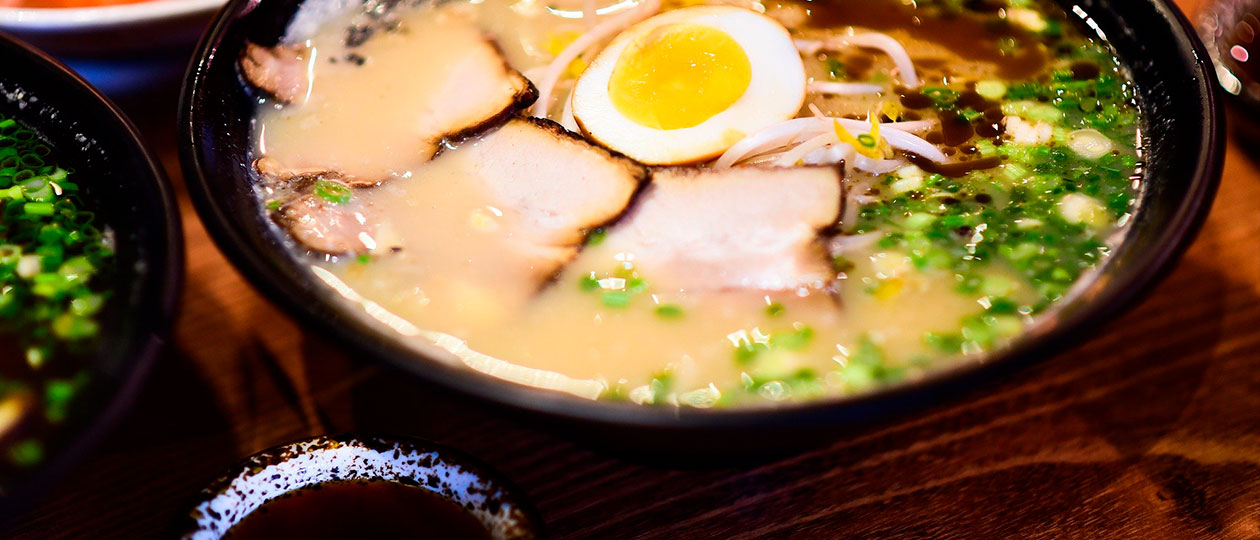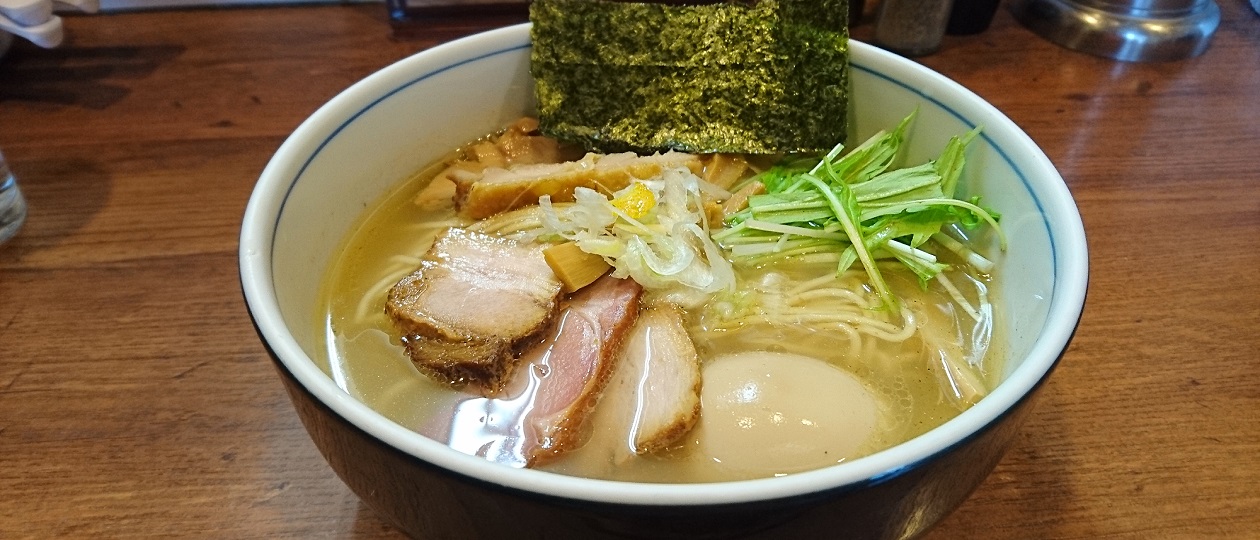
A newcomer from China, ramen (ラーメン or rāmen) quickly spread throughout Japan and gained fame as one of the most popular dishes here.
From Kyushu to Hokkaido, it has won the hearts of Japanese people of all ages and has slowly begun to take on regional flair. Miso ramen originated in the north of the country. This rich beef broth with fragrant miso paste, corn and a cube of butter is rich and warming, perfect for the cold winters of northern prefectures.
And in the south of Japan, the notorious Tonkotsu ramen style was born. Milky-colored broth on pork bones, it is decorated with pickled ginger straws, the sourness of which contrasts perfectly with the fat content of the broth. Other features of this ramen are “wood jellyfish” – as the Japanese call black tree fungus, added as a topping – and especially thin noodles, the cooking time of which is reduced so that the noodles have a firmer, and sometimes “wire” texture – “harigane “.

Regions have enriched ramen with local flavors, local habits, and a unique approach to cooking. On the wave of popularity of ramen, which increased by leaps and bounds, local troubles got out of their native lands and spread throughout Japan.
Ramen at its core is a very simple and uncomplicated food: broth, noodles and various additives, such as a boiled egg, a slice of pork and a green onion.
But the Japanese passion for excellence, the desire to make things even better and tastier, along with the spirit of competition against the backdrop of high competition, moved the ideas of culinary delights forward.
Each element of the dish has become a separate exact science. Noodles, thanks to the addition of Kansui (鹹水) alkaline solution, became more elastic and resistant to boiling, and also acquired a well-known yellowish tint. The broth has turned into a multi-level symphony, when notes that are invisible during the absorption of the dish are revealed in a long aftertaste. Feeling this new taste only when you leave the restaurant on the street, your face involuntarily breaks into a smile. For cha-shu pork slices, they began to combine different parts of meat and techniques – coals to give a special flavor and sous-look to maintain the perfect texture.
At the same time, the art of boiling eggs reached mathematical precision. The fact is that the yolk and protein coagulate (begin to seize) at different temperatures. By maintaining the overall cooking temperature in the range of 65-68 degrees, you can get an egg in which the protein has the consistency of a delicate custard, and the yolk has a dense texture and amber color. Such an egg is called an onsen tamago (温泉卵) (“onsen hot spring egg”).
Over time, author’s ideas began to penetrate into the world of ramen. One of the innovators was Kazuo Yamagishi (山岸一雄), the inventor of the tsukemen.
Tsukemen is a type of ramen where noodles and soup are served separately. The noodles are dipped into the soup before eating. The soup acts as a kind of dipping sauce, so unlike regular ramen soup, it has a much richer and more intense taste.
Tsukemen, developed by Kazuo Yamagishi in 1961, was a breakthrough, earning its creator the title of “God of Ramen”. His noodle shop Taishōken, having become a large network, by 2015 already had over 100 establishments throughout Japan. Many of Yamagishi’s students achieved great success, and some created entirely new trends in the genre, and one of them was Osamu Tomita (冨田修).
He took the idea of tsukemen to perfection, with his extra-thick fish and pork “tonkotsu-gyokai” soup and thick whole-wheat noodles earning him the title of Japan’s top ramen shifu (拉面師傅 / ラーメンマスター) master for several years in a row. In 2017, the documentary Ramen Heads was filmed around his success story. Today, to get into his Chuka Soba Tomita restaurant in Matsudo City (松戸市, Matsudo-shi) of Chiba Prefecture (千葉県, Chiba-ken), you have to arrive at 8 am, stand in line for an appointment, and start serving only from 11, after recording, there is already a question of workload and luck. If you manage to eat at lunchtime, then consider yourself very lucky.
Today, restaurants specializing in ramen receive Michelin stars. Ramen guides are published annually, summing up the results of the outgoing year and awarding ratings. And in the Olympic Park “Komazawa” (駒沢オリンピック公園, Komazawa Olympic Park) in Tokyo, the annual ramen festival is held, where noodle craftsmen from all over Japan gather to show everyone their vision of this dish.
Ramen is open to improvisation. This is a platform for creative freedom and the opportunity to show your individuality. The desire to prove oneself, to show subtle knowledge, attracts chefs from various disciplines. There are places where the ideas of French and Italian cuisine are based, or ingredients unusual for ramen are used – black truffle, slippery natto beans, grilled smelt ayu fish. And in a restaurant with a funny name “Papapapapine” the center of taste is pineapple.
Vegetarian variations of ramen that are not inferior to the usual taste are also successfully created.





